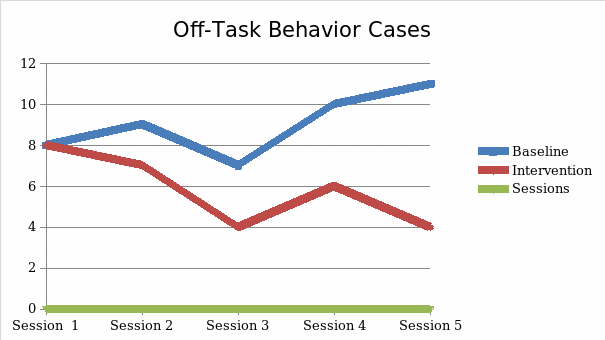Background
Teresa is an 8-year-old female student who is diagnosed with autism spectrum disorder (Diagnostic and Statistical Manual of mental disorders (DSM-5)) and attention deficit hyperactivity disorder and assigned the Applied Behavior Analysis (ABA) therapy. The patient’s family comes from Mexica and has problems with speaking English, which complicates the situation. While studying in the general education classroom, Teresa receives special education three times per week (each session lasts 30 minutes) and has a qualified personal assistant. Recently, the school teacher noted that this student faces significant problems with compulsive behavior and repeated body movements, failing to stay concentrated on the assigned task. When the schedule was consistent, Teresa showed greater compliance with the assignments, but instructional activities required more independence and made her respond non-productively. The patient has some challenges with verbal communication, yet she can ask the desired items and answer the questions posed by the teacher or other persons. The token economy intervention is to be used to help Teresa to become more focused on educational assignments.
Problem Analysis
Teresa is a student, who has limited skills in language and mathematics, but her education is adjusted to her abilities. During the lessons, her teacher gives her special tasks and pays more attention to explain the topics to her. The failure to complete a task can cause an outbreak of anger in Teresa, provoking a tantrum, and aggression can be directed at others and herself. As an autistic child, she tends to do the same things for a long time: repeating the same word, swaying from side to side, looking at rotating objects, and so on. This student is characterized by compulsive behavior, the adherence to a certain routine, without which she becomes frustrated. If this routine is violated, she becomes worried and disoriented, for example, if someone rearranges toys on a shelf or asks her to engage in an unknown activity. The review of the patient’s current learning condition shows that there is a need to improve her ability to practice on-task behavior, developing her executive functioning skills, self-control, and flexible thinking.
The pronounced lack of independence is characteristic of Teresa, who fails to complete tasks self-reliantly. The idea of having an assistant all the time near this student seems to be unreasonable since she needs to struggle through the tasks on her own. The constant help of assistants may be detrimental to the child with autism, who should not be hesitant to make mistakes and correct them. To increase the student’s concentration and compliance with tasks, the token economy intervention is proposed. To collect the baseline information, Teresa was assessed based on the Functional Assessment Screening Tool (FAST) to understand her behaviors and functioning. In operation terms, the problem was defined as follows: sitting frustrate without paying little attention to the instructions given by the teacher, and poor knowledge of English creates additional difficulties. Since a lack of on-task behavior negatively impacts the students’ academic performance, it is important to introduce the effective evidence-based intervention. The AB design is used to measure the patient’s progress by tracking the pre- and post-intervention number of off-task behavior cases.
Graph / Data

Evaluation of Intervention
The token economy system was used to reinforce the given patient to improve her on-task behavior by means of offering her to complete short tasks within 3-5 minutes and receive the reward. The AB method was applied as the experimental framework, which allowed collecting data on the previous number of off-task behavior. The interview with the teacher and review of her recent academic performance were also useful to understand the background of the problem. The baseline information was gathered for five days, while the following five days were devoted to the intervention.
The baseline data shows that Teresa was engaged in high levels of non-desired behavior, while there is the variability of the cases. The intervention data indicates the significant reduction of on-task-behavior, which seems to be cyclic yet with the evident tendency to decrease. The student became less frustrated and more concentrated on the tasks given to her by the instructor. The additional reinforcement was provided by using the toy and item of interest. Teresa enhanced her self-control skills and understood that she can complete the tasks independently. More to the point, the student mastered the use of the token economy system, which can be applied in the future for other emerging problematic behaviors.
Based on the conducted intervention outcomes, it is possible to suggest several recommendations. Teresa needs frequent breaks to recover and reorganize: during the day, the resource of her mental energy is depleted, and the ability to concentrate decreases. If the previous lesson required a lot of concentration, she may not focus on the next one. By giving her frequent breaks and using the token economy, it is possible to maximize her ability to concentrate. Thus, one can conclude that the use of the discussed intervention was beneficial for Teresa as it allowed improving her concentration and, presumably, overall academic performance.